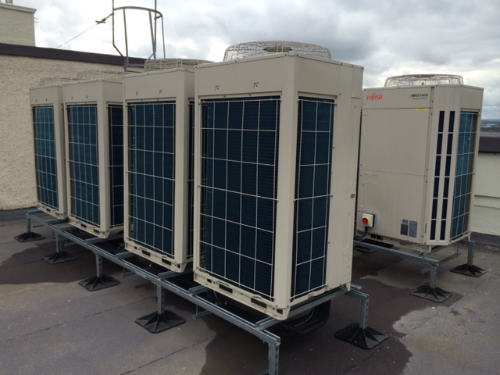Variable Refrigerant Flow (VRF) systems are a type of HVAC (Heating, Ventilation, and Air Conditioning) system that provides both heating and refrigeration for a building. Several factors contribute to the energy efficacy and cost-effectiveness of VRF systems:
Zoning Capability: VRF systems are able to divide a building into multiple zones, allowing for temperature regulation in each zone independently. This capability enables more precise control and prevents energy waste by heating or cooling unoccupied spaces.
Variable Capacity: VRF systems modify the refrigerant flow and compressor speed according to the heating or cooling needs of each zone. By operating under partial load conditions, they are able to match the precise cooling or heating needs, resulting in energy savings compared to conventional HVAC systems that operate at a fixed capacity.
Heat Recovery: An important advantage of VRF systems is their capacity to recover and redistribute residual heat from cooling-needing zones to heating-needing zones. This heat recovery capability reduces the need for additional heating apparatus and enhances energy efficiency overall.
Individual Temperature Control: VRF systems provide individual temperature control for every indoor unit in a zone. This allows occupants to adjust the climate to their liking, enhancing comfort and reducing energy consumption.
Reduced Ductwork: VRF systems use refrigerant lines as opposed to extensive ductwork, resulting in lower installation and maintenance costs. The lack of ducts also reduces energy losses caused by duct leakage.
Intelligent Controls and Monitoring: Many VRF systems include advanced control options, such as programmable timers, occupancy sensors, and building management system integration. These capabilities allow for the optimisation of energy consumption and provide insights into system performance to facilitate efficient operation and maintenance.
It is essential to note that the cost-effectiveness of VRF systems can vary depending on building size, climatic conditions, energy costs, and installation considerations. Conducting a comprehensive analysis, which includes a cost-benefit analysis and consideration of your building’s specific needs, will help determine the potential cost savings and return on investment associated with installing a VRF system.


